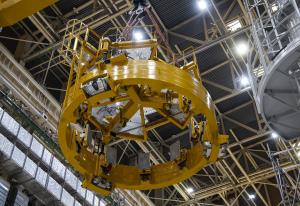Designed for a strong embrace
From November 2021 to January 2022, the teams practiced this delicate operation in the free space inside the Cryostat Workshop. Last week, the lifting fixture was moved to the Assembly Hall area dedicated to central solenoid activity. The installation of the first module on the assembly platform is scheduled during the last days of April.


